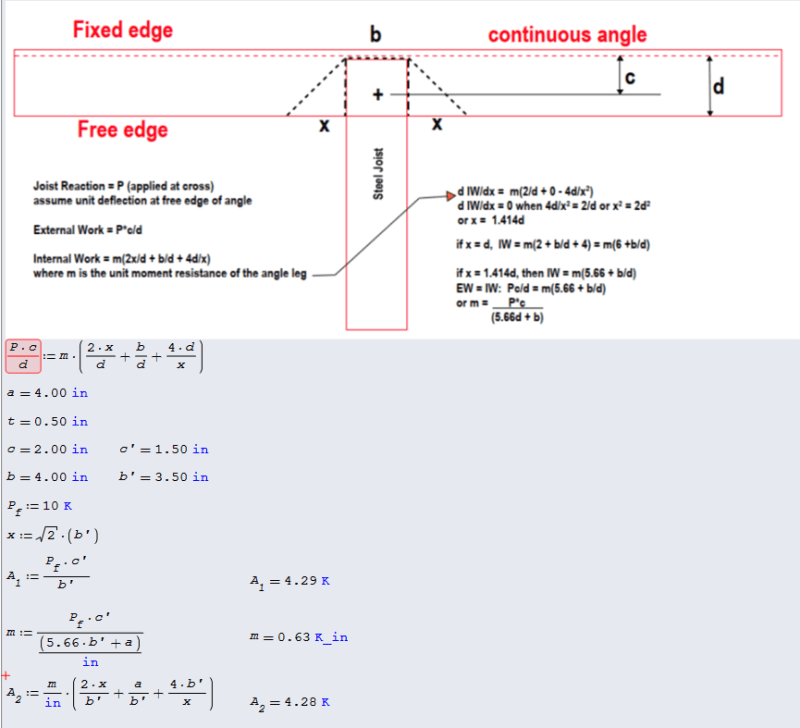MindofBarca
Structural
Hello All,
I have an insulated precast wall panel with a cast-in-angle with studs to provide support for roof joists (see attached detail). The angle is 6x6x1/2 and is subjected to 11.6k of ultimate shear force. I am trying to determine the bending/thickness of the cont. angle. The joist load is occurring roughly every 6', however, the angle and studs are continuous. How would I go about this calculation?
Is my b = 12" (distance of stud spacing?)
Right now I am doing a rudimentary thickness calc such as: t req = sqrt((m*4)/(phi * fy * b)) and coming up with 0.6inch ie 5/8" thick angle. Is this correct?
Thanks in advance, cheers!

I have an insulated precast wall panel with a cast-in-angle with studs to provide support for roof joists (see attached detail). The angle is 6x6x1/2 and is subjected to 11.6k of ultimate shear force. I am trying to determine the bending/thickness of the cont. angle. The joist load is occurring roughly every 6', however, the angle and studs are continuous. How would I go about this calculation?
Is my b = 12" (distance of stud spacing?)
Right now I am doing a rudimentary thickness calc such as: t req = sqrt((m*4)/(phi * fy * b)) and coming up with 0.6inch ie 5/8" thick angle. Is this correct?
Thanks in advance, cheers!


